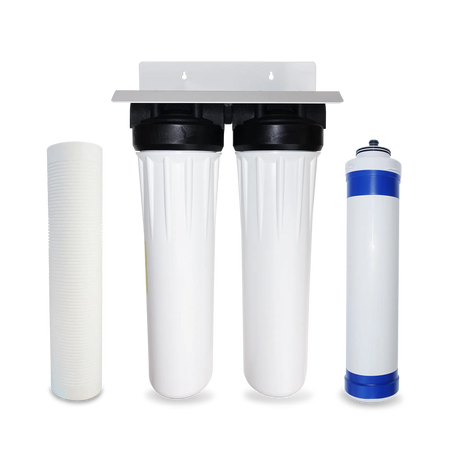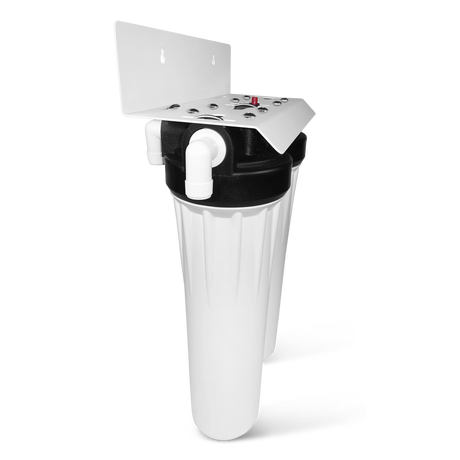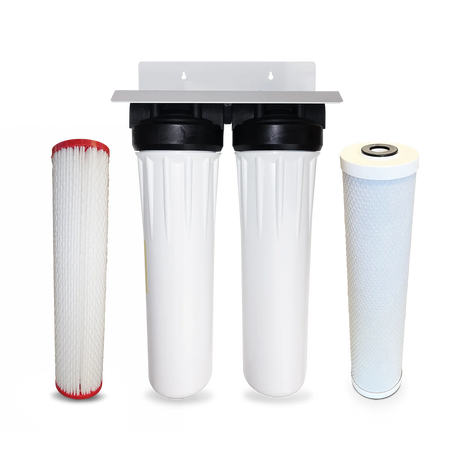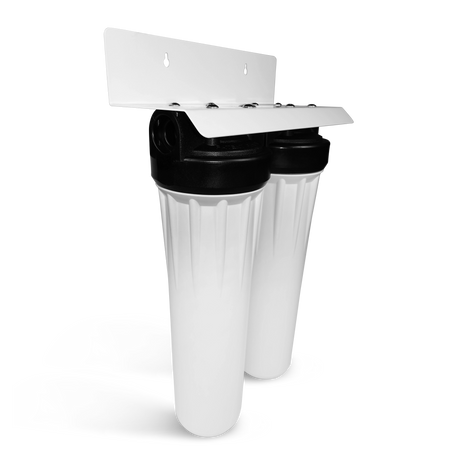Help, I have yellow / brown water! What are tannins & how to remove them
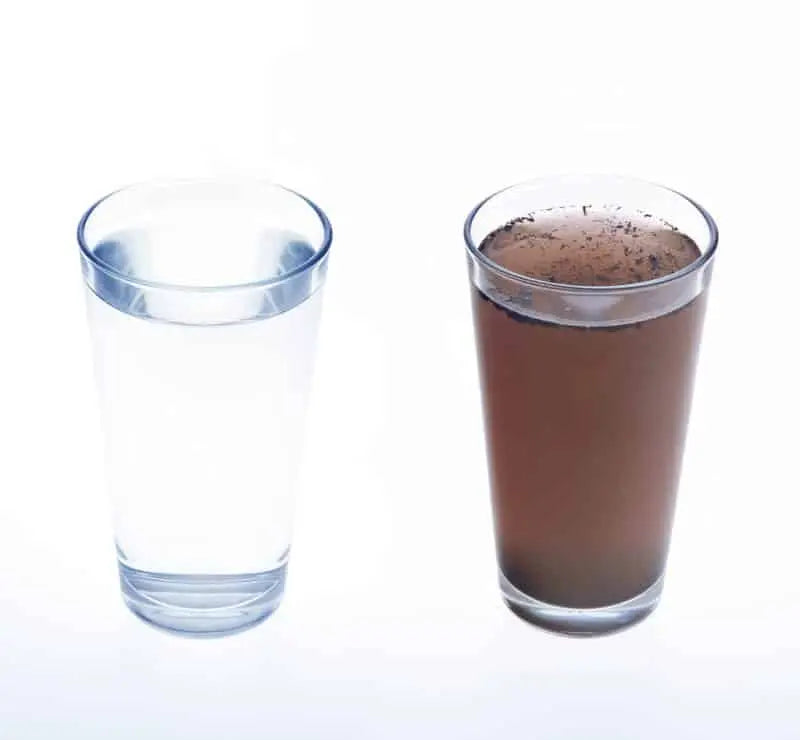
Does you water have a yellow or brown tint? Does it taste bitter or have a musty odor? Is it leaving stains on laundry or in your toilet? If this describes your water, tannins might be the reason. Before you panic too much, tannins are not a health hazard...they are definitely an annoying, aesthetic problem though! Contents
- What are tannins in water?
- Are tannins in water harmful?
- Simple test for tannins in water
- How to remove tannins from water
What are tannins in water?
Tannins are created as water passes through rotting organic matter or peaty soil in the water table. They're also caused by low hanging branches, dead leaves, and trees in a water source. Tannins are basically the color left in water from the leaching of color from organic matter. Tannins are more common in marshy, low-lying, or coastal areas. They also affect surface water supplies such as shallow wells. For a moment, let's think of making a cup of tea: you start out with (hopefully) a mug of clear water, and when you add a tea bag or loose leaf tea the water begins to change color, getting darker and darker as it brews. This is how tannins work in water basically. In fact, tannins actually give black tea its distinctive color. The most common indicators of tannins in water are:- yellow or brown tint
- bitter taste
- musty, earthy odor
- staining laundry, fabrics, fixtures, toilet bowl, and china
Are tannins in water harmful?
Tannins are not dangerous, but they're certainly unpleasant to drink or live with when they stain things. In general, we ingest them on a daily basis in our food and certain beverages such as wine, tea, apple juice, apple cider, grape juice, and beer. However, it's still pretty gross to turn on the faucet and see yellowish/brownish water, yuck! Although yellow or brown water is not ascetically pleasing, tannins do not actually pose a serious health issue. If tannins are present in the water, it could mean your water source is affected by surface water. It's important to keep in mind that if tannins can easily travel from surface water to your water source, bacteria can easily travel through to. Bottom line: make sure you have a water filter system that removes bacteria in your water.Help! I Have Yellow or Brown Water: How to Test for Tannins or Iron
Tannins are often mistaken for iron since both can cause brownish water and staining. To determine whether the problem is tannins or iron, here's a simple test: fill a clear glass with water and let it sit undisturbed overnight. If the water has the same intensity of color, tannins are most likely the culprit. If the color settles to the bottom of the glass, the discoloration is most likely caused by iron and/or manganese. It's also possible that your water may have both tannins and iron. A comprehensive water test will reveal if this is the case, as well as identifying other contaminants in your water. When there are both tannins and iron in your water, it's a tricky combination that no single water filter can adequately handle and therefore you'll need a separate pre-treatment for iron, and a separate water filter for tannins.How to remove tannins from water
For a very long time efficient treatment for tannins stumped water treatment specialists. With so many different types of tannins and varying water quality, it's impossible to say that a single treatment will be 100% effective in every situation. However, there are a few very solid options to attempt to tackle tannins in your water. System performance is dependent upon incoming water quality and life expectancy of the filter varies with the water supply. With proper pre-treatment, many users experience a filter life of one year, and a Premiere ultrafiltration membrane life of up to five years. As mentioned previously, if you have both tannins and iron in your water, the following treatment methods will not be effective on their own.Ultrafiltration to remove tannins from water
Ultrafiltration is a type of membrane filtration which purifies and disinfects water. A membrane barrier acts like a filter using slight pressure to separate particles like bacteria, viruses, germs, pollen, algae, and organic molecules from the water. Ultrafiltration is ideal for well water. Benefits of ultrafiltration include:- No chemicals required
- Environmentally friendly technology
- Constant product quality no matter the feed quality
- Exceeds regulatory standards of water quality- has over 99.9% bacteria and pathogen removal
- A membrane filter lasts much longer than a conventional filter (years versus months)


